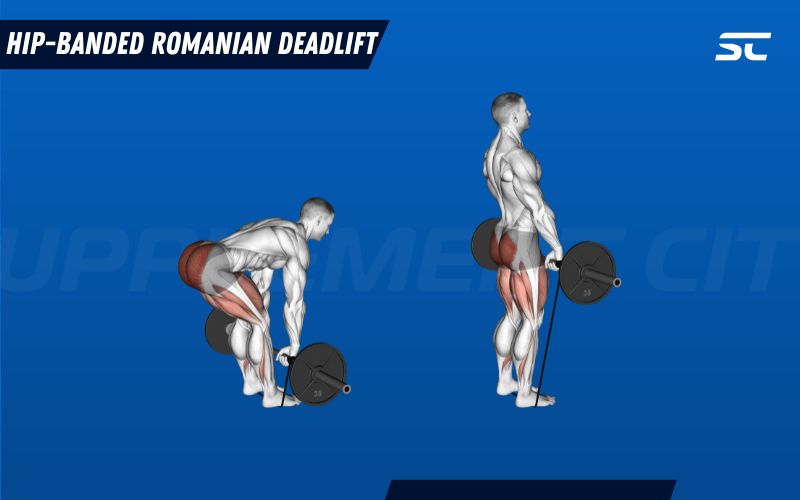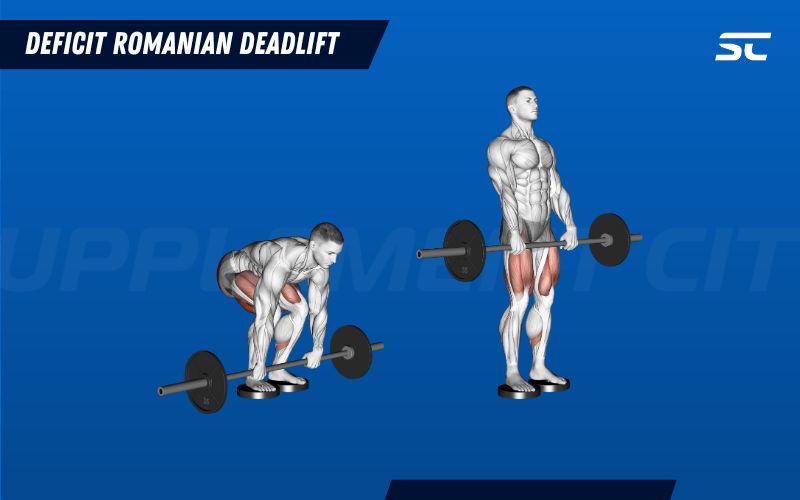One of the most versatile exercises to include in your fitness regimen is the Romanian deadlift. While the name might sound intimidating, this exercise is accessible to everyone, irrespective of their fitness levels. Whether your goals revolve around physique development, athletic performance enhancement, or general health, the Romanian deadlift is a potent tool that deserves a spot in your training arsenal.
This guide will delve into the intricacies of How to Do Romanian Deadlifts, from the basics to advanced techniques, variations, and common mistakes to avoid. Brace yourself for an in-depth exploration of this powerful workout.
Understanding Romanian Deadlifts
Performing Romanian Deadlifts: The Step-by-Step Guide
Let's delve into the step-by-step process of performing Romanian deadlifts correctly. Remember, proper form is critical to harness the full benefits of this exercise and to avoid potential injuries.
- Setting Up: Start by positioning a barbell in front of you on the floor. Make sure there's about an inch of space between your shins and the bar. Your feet should be placed underneath your hips, and your grip on the bar should be slightly wider than shoulder-width.
- Tightening Back Muscles: As you grip the bar, begin to tighten your entire back. Even though the muscles of your upper back don't go through a significant range of motion, engaging them is crucial to maintain a tight core and to keep the bar close to your body.
- Hip Movement: Start the exercise by sending your hips back. As you do this, ensure your back remains flat. Your knees will slightly unlock as your hips start tracking backward. Maintain balance over the center of your foot.
- Returning to Start Position: At the bottom of the movement, maintain a neutral spine and drive through your heels to fully extend your hips and knees. Squeeze your glutes at the top of the movement to return to your upright position.
Remember, the key to executing Romanian deadlifts correctly is to keep the barbell close to your body throughout the movement, maintaining a flat back, and driving your hips forward to return to the starting position.
Romanian Deadlift Variations You Can Try
Once you've mastered the basic Romanian deadlift, you can experiment with various modifications to challenge yourself and keep your workouts exciting. Here are three RDL variations you can incorporate into your training:
- Hip-Banded Romanian Deadlift:
 This variation involves attaching two light-to-moderate resistance bands between the barbell and the pillars of a squat rack. The use of bands helps reinforce proper engagement of your glutes and strengthens quality movement patterns.
This variation involves attaching two light-to-moderate resistance bands between the barbell and the pillars of a squat rack. The use of bands helps reinforce proper engagement of your glutes and strengthens quality movement patterns. - Trap Bar Romanian Deadlift: A trap bar allows for a more ergonomic grip option and places the load in line with your center of mass. The shifted grip position alters the distribution of the load across your body, focusing more tension on your quads and core.
-
Deficit Romanian Deadlift:
 Performing the RDL from a deficit allows for a greater range of motion at the hip joint, which increases the eccentric loading stress placed upon the glutes and hamstrings. To perform this variation, stand on an elevated surface like a riser or a few bumper plates.
Performing the RDL from a deficit allows for a greater range of motion at the hip joint, which increases the eccentric loading stress placed upon the glutes and hamstrings. To perform this variation, stand on an elevated surface like a riser or a few bumper plates.
Alternatives to Romanian Deadlifts
If you're finding it challenging to nail down the technique of the RDL, here are a few alternative exercises that closely mimic the Romanian deadlift but add a unique twist to the movement:
-
Good Morning:
The good morning exercise shifts the location of resistance by placing the bar on your back, similar to a squat stance. This alteration makes a much lighter weight feel comparably heavy on your back and hips.
-
Hip Thrust:
Hip thrusts allow you to lift heavy weights and tax your hip extensors (primarily your glutes) without placing significant stress on your lumbar spine. This makes it a great alternative if you're trying to limit axial load.
Who Should Incorporate Romanian Deadlifts?
The Romanian Deadlift is a hinging movement, making it a fundamental exercise that every able-bodied individual should be able to perform. However, certain groups stand to reap the benefits of the Romanian more than others:
- Beginners: As a new lifter, learning and developing the skill of the hip hinge lays the foundation for a well-rounded physique. The technique of the Romanian deadlift can also help reduce your risk of injury.
- Team Sports Athletes: In team sports, hamstring and ACL injuries are prevalent. Athletes who incorporate hamstring eccentric loaded exercises such as the RDL may assist greatly in tissue strengthening and prevention of injury.
- CrossFitters: CrossFit training involves constantly varied functional movements often performed at high intensities. Adding one to three muscle-building sessions into your programming, including exercises like the RDL, will help support you in building lean muscle tissue.
What Are The Benefits of Romanian Deadlifts?
The Romanian Deadlift brings several benefits to the table, making it a valuable addition to any workout routine:
-
Bigger Legs and Glutes:
The RDL primarily targets the glutes and hamstrings, contributing to a well-rounded physique and stronger lower body.
-
A Stronger Lower Body:
With consistent practice and progressive overload, the RDL can significantly improve your lower body strength.
-
Injury Prevention:
Developing robust hamstrings and glutes can provide a more favorable hamstring-to-quadriceps ratio, potentially lowering the risk of hamstring injuries or damaging any of the knee ligaments.
-
Increased Flexibility:
Resistance training exercises like the RDL can improve your muscular flexibility, especially during the eccentric phase of the exercise where your hamstrings lengthen under load.
Muscles Worked by Romanian Deadlifts
Understanding the anatomy and functionality of the muscles worked by Romanian Deadlifts can greatly enhance your mind-muscle connection during this exercise:
- Glutes: The glute complex is primarily responsible for hip extension during the second half of the RDL.
- Hamstrings: Your hamstrings engage heavily during the hinging phase of the RDL, absorbing the load and extending your hips to return you to your starting position.
- Adductors: The adductor muscles of your inner thigh assist in the hinging phase of an RDL and provide internal stability of your pelvis during the lockout phase of the RDL.
- Abdominal Muscles: Your core musculature plays a pivotal role in protecting your spine during RDLs. Properly bracing your core and maintaining a tight abdomen can contribute to a safer and more effective lift.
Common Romanian Deadlift Mistakes to Avoid
While the Romanian deadlift is a relatively straightforward exercise, there are common mistakes that can hinder your progress and potentially lead to injuries:
- Not Keeping The Bar Close: The further the bar drifts away from your body, the harder it becomes to lift, potentially affecting your balance and muscular activation.
- Excessive Back Rounding: This can occur due to poor technique or lifting a weight that's too heavy for you. Always ensure you're lifting with a flat back and using your legs.
- Too Much Knee Bend: Excessive knee bending can turn your RDL into a conventional deadlift, emphasizing different muscle groups. Keep an eye on your knees; they should be slightly bent throughout the movement.
Final Thoughts
Incorporating Romanian deadlifts into your workout routine can be the key to unlocking a stronger, well-built physique. Whether you're a beginner or a seasoned athlete, learning How to Do Romanian Deadlifts correctly can significantly enhance your overall strength, flexibility, and athletic performance. So, why wait? Get started with Romanian deadlifts today, and take a significant step towards achieving your fitness goals!
